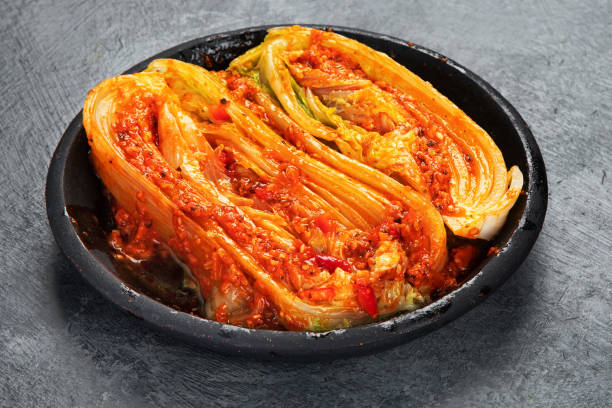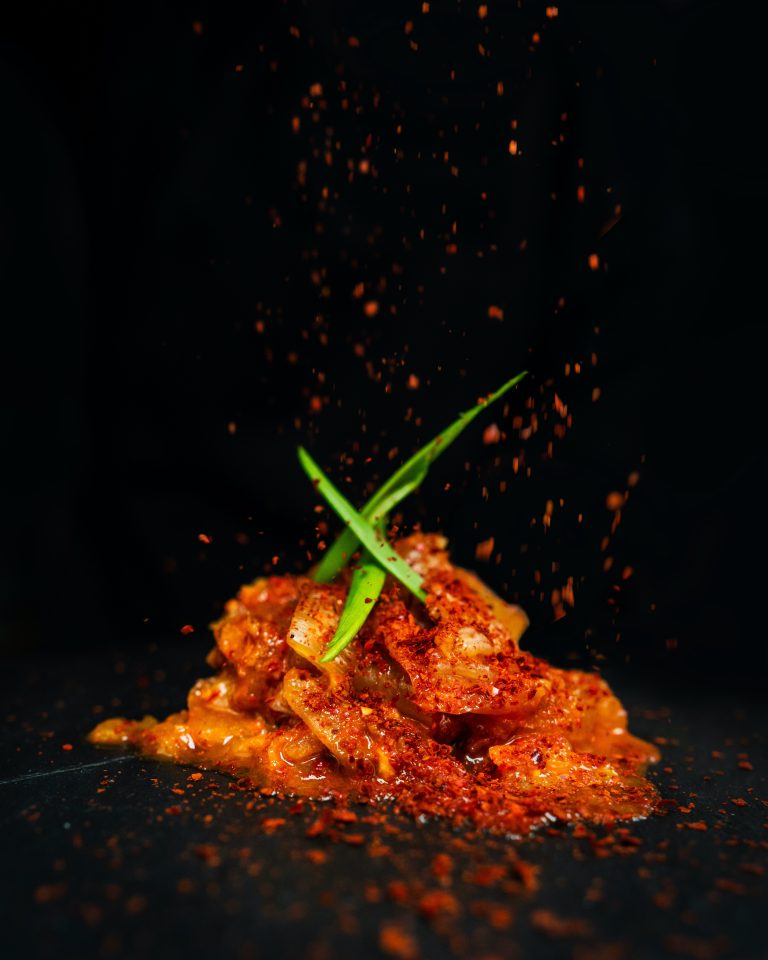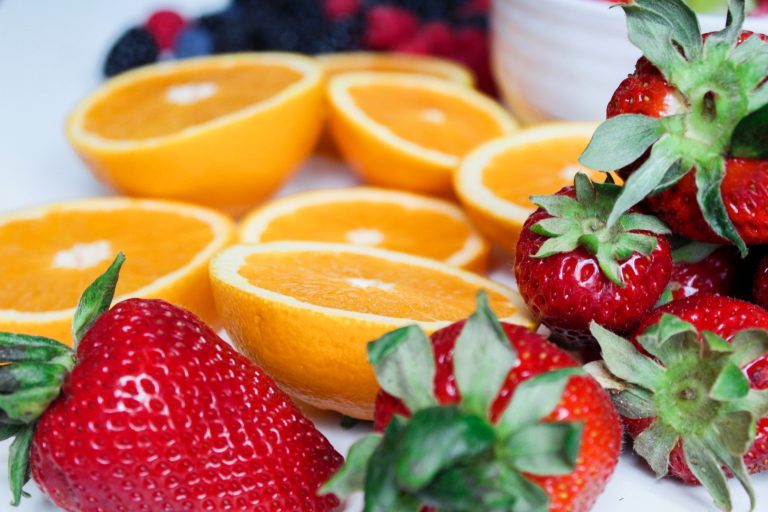Fresh Kimchi vs. Fermented Kimchi: What Are the Differences?
If you like international food, you’ve probably heard of the traditional Korean dish called kimchi.
Kimchi has been around for thousands of years and there are hundreds of different varieties.
One of the most popular is fresh, unfermented kimchi. If you want to know what the difference is between fresh and fresh ferment, you have come to the right place.
The taste, appearance, whether or not it is brined, and how it is stored are some of the differences included in the Korean name.
When it comes to Kimchi, fresh is always better. As for fermented vs. fresh, it’s up to you.
The key difference is fermentation time. Fresh Kimchi is made with a mixture of vegetables and spices, then quickly fermented to keep the raw vegetables safe.
Fermented Kimchi is made with a paste of various ingredients like fish, eggs, and tofu, then left to ferment for weeks or months before being served.
Table of Contents
Differences Between Fresh and Fermented Kimchi
Name
The name is the most fundamental difference between these two. The most common type of kimchi is the one made with napa cabbage leaves.
There are many other types of kimchi, such as Bossam-Kimchi, which doesn’t contain chili pepper, and Baek-Kimchi, which is a non-spicy watery variety.
There are two types of kimchi, one of which is fresh or unfermented and the other which is made from radishes.

Taste
The taste is one of the most important differences between fresh and fermented. It is similar to salads in that it is fresh and raw.
You will notice that the vegetables are very crisp when you taste them. Each vegetable has a taste that you can taste.
On the other hand, the taste of kimchi is very strong. The flavors of all vegetables mix and make for a unique taste during the fermentation process.
The sour taste of the unfermented counterpart is stronger than that of the fermented counterpart.
Appearance
The lack of fermentation makes fresh kimchi look more like a salad. Vegetables can be clearly distinguished from each other in fresh kimchi.
The spices do not look blended with the vegetables, they look more like a dressing.
Fermented kimchi is more liquid than fresh, and all of its ingredients are mixed.
Vegetables can change color due to the spice paste, rendering them almost indistinguishable on your plate.
Season
During the fall and winter, Fermented kimchi is usually made.
This allows you to store your kimchi at a low temperature, which will allow it to ferment slowly and produce an exceptional flavor.
In the spring and summer, it’s possible to make fresh, unfermented kimchi. When the cabbage is in season, it can be used to create delicious salads.
It’s perfect for fresh kimchi because of the small size of Summer napa cabbage. There are always exceptions.
Both types of kimchi can be enjoyed throughout the year, depending on your preferences.

Ingredients
Surprisingly, the ingredients of fresh and fermented kimchi are almost the same. The amount of salt used is the only thing different.
A smaller amount of salt is added to the fresh kimchi. There is no limit as far as other ingredients are concerned.
For example, you could use the same ingredients for both types of kimchi.
Use
One of the differences between the two types is the way they are used.
Since the point is not to let it ferment when you make fresh kimchi you eat it immediately.
It goes well with noodle soup, Korean barbecue meat, etc., and is great as a side dish.
If you want to make sauerkraut, you shouldn’t consume it right away.
It takes a lot of time for the process to be completed. The process can last from a couple of days to a couple of weeks depending on where you store it.
If you plan, you will be in a better position to make a decision. It works well with rice, porridges, and rice cakes, and Fermented kimchi is good with rice.
It can be used as a basis for other meals such as kimchi stew, pancakes, soup, and so on.
Brining Time
You are probably wondering about the differences in the preparation process since you know the ingredients are almost the same.
Brining time is the answer to that question. Fresh kimchi is supposed to be eaten right away since it is unfermented.
30 minutes to an hour is how long the brining time is. The time it takes for kimchi to be brined is a lot longer.
Brining usually lasts from three to eight hours since you have to prepare the kimchi.
There is no specific time when your kimchi will be ready to use. It depends on who you are and what you want to achieve.
If you want a milder flavor, your kimchi will be ready in a few days if kept at room temperature.
You can keep your kimchi at room temperatures for a few weeks if you want a more bitter taste.
Storage
Fresh kimchi can be stored in the fridge for about a week depending on the amount of salt used.
It is possible to store Fermented kimchi for a long time. It can be used for three to six months after opening if you keep it in the refrigerator.
It will be good for about two to three weeks if you keep it at room temperatures.
Probiotics
There is a difference in the presence of bacteria between fresh and fermented. The sugars and starches are turned into lactic acid during the process of fermentation.
It is possible to eliminate harmful bacteria by lowering the pH level. The flavor of kimchi becomes stronger and sourer as a result of the acid affecting it.
It has an abundance of health benefits.
- It has an excellent nutrition profile, with a lot of vitamins and minerals.
- It contains powerful microorganisms that are responsible for fighting many conditions and diseases.
- It increases the strength of your immune system.
- The reduction in inflammation is achieved by it.
- It can help to fight off yeast infections.
- It can make a difference in weight loss.
- It reduces the risk of heart disease and protects your heart.
Since it is not fermentable, the situation is a little different when it comes to fresh kimchi.
There isn’t enough room for the development of good bacteria due to the absence of fermentation.
That does not mean that fresh kimchi is not good for you.
It still has an abundance of vitamins and minerals, such as vitamins A, riboflavin, iron, vitamins C, and calcium.
Conclusion
Although the ingredients are almost the same, fresh and fermented kimchi are different in many ways.
The amount of salt used, the amount of time brined, and the presence of bacteria are important factors.
It is up to you, it is entirely up to you. You can choose the one you like best from hundreds of varieties of kimchi.

Foodie and a passionate cook, I am here to share all of what I know about cooking, kitchen, and food prepping.
Follow me for delicious and healthy recipes.







